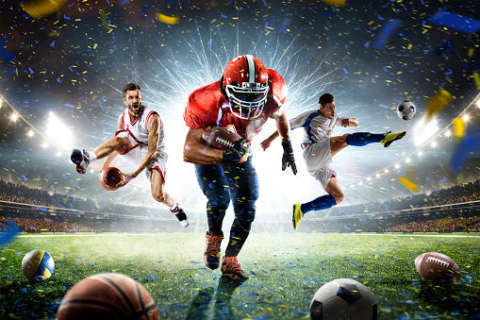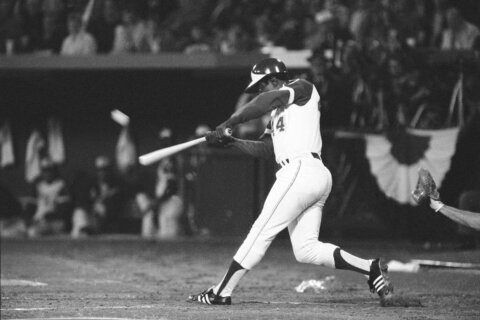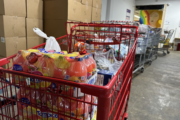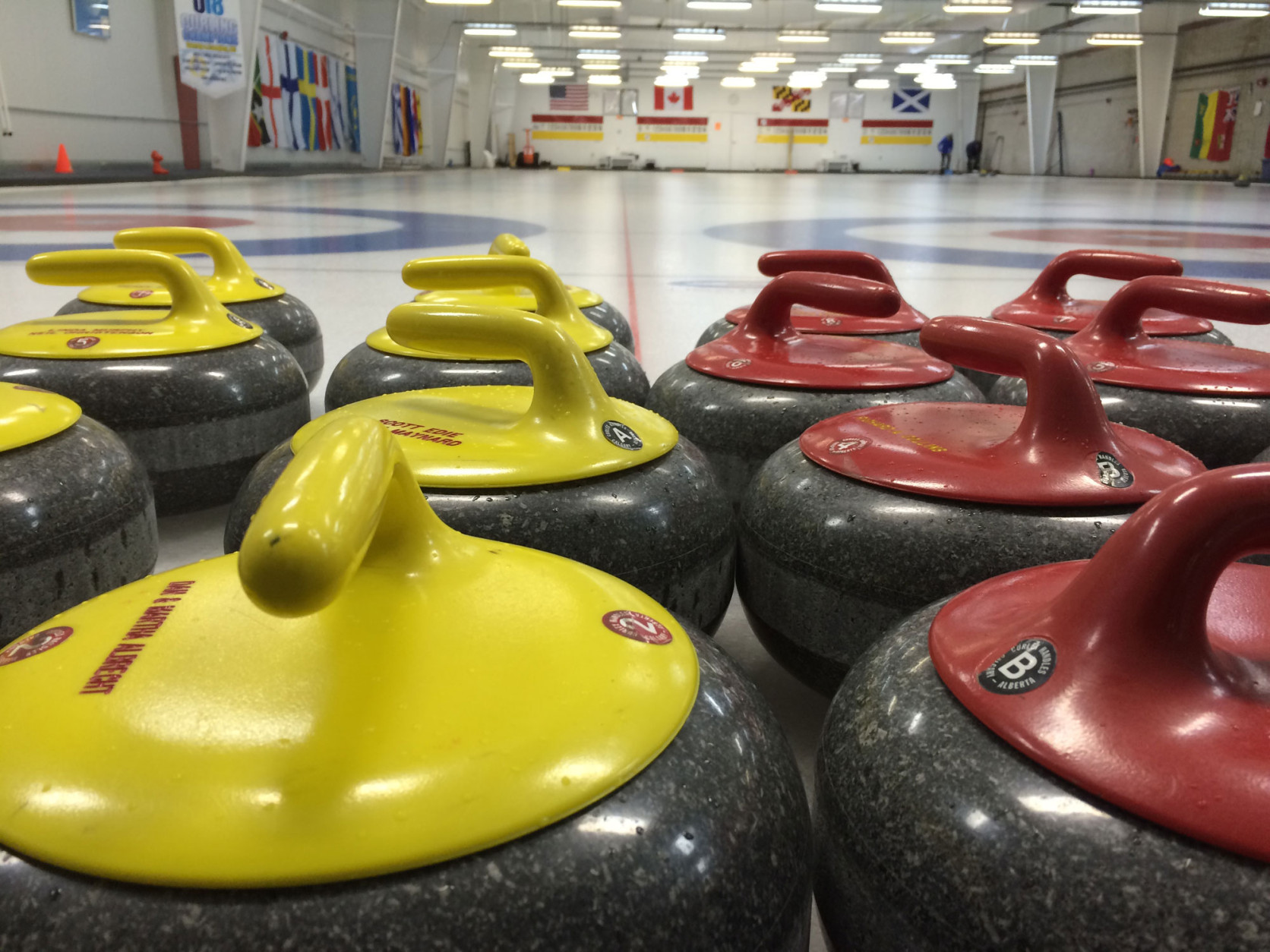
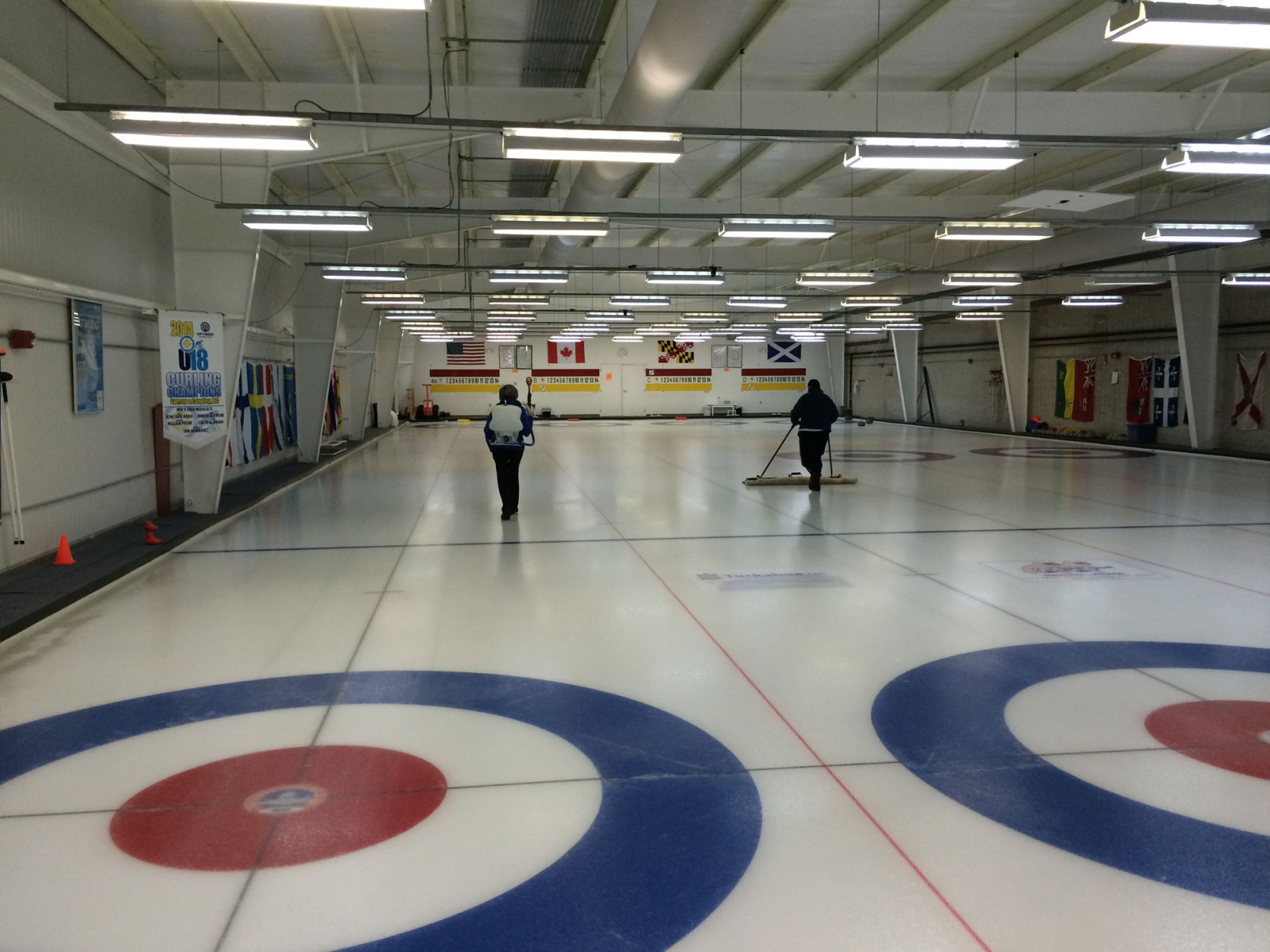
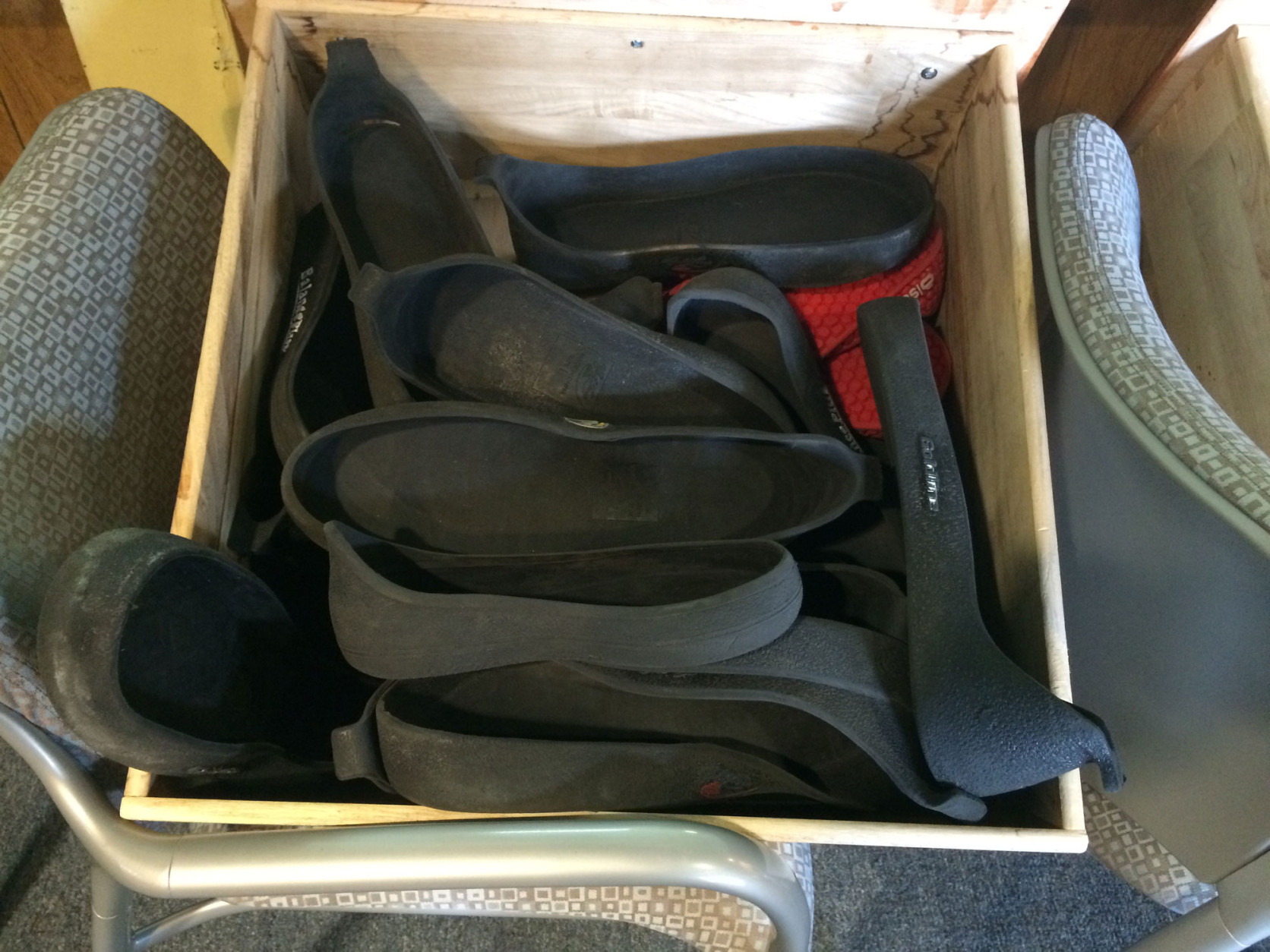
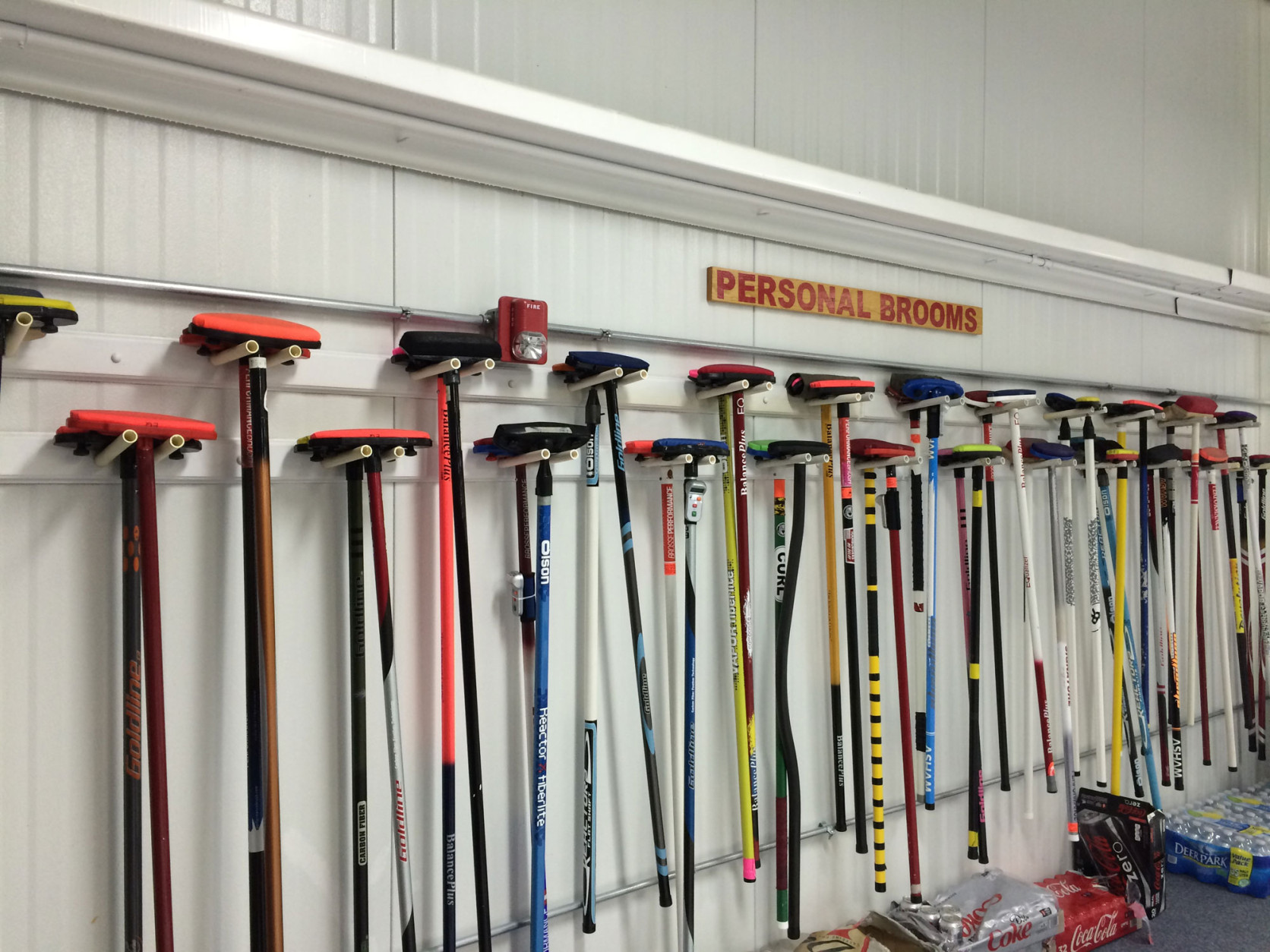
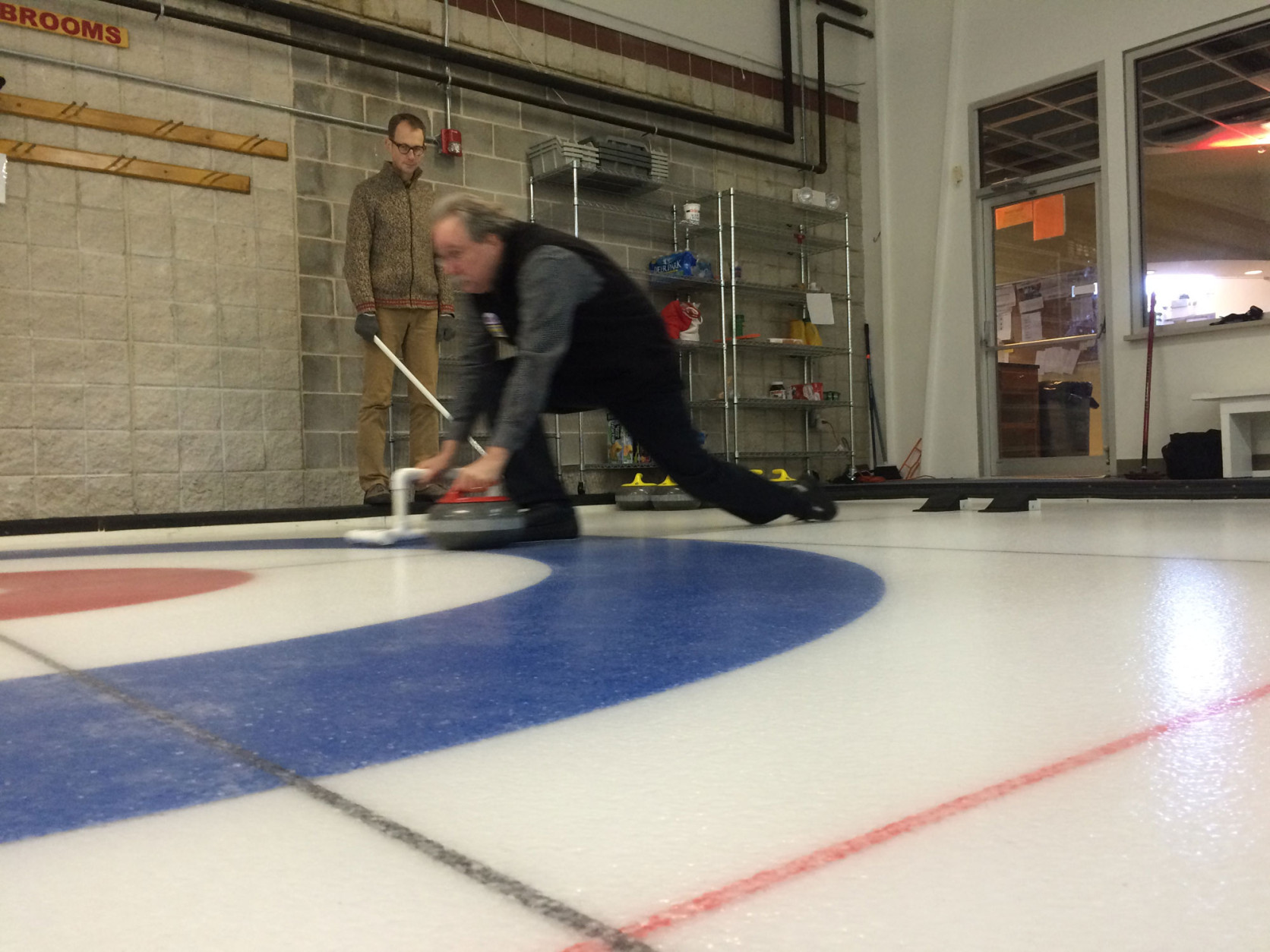
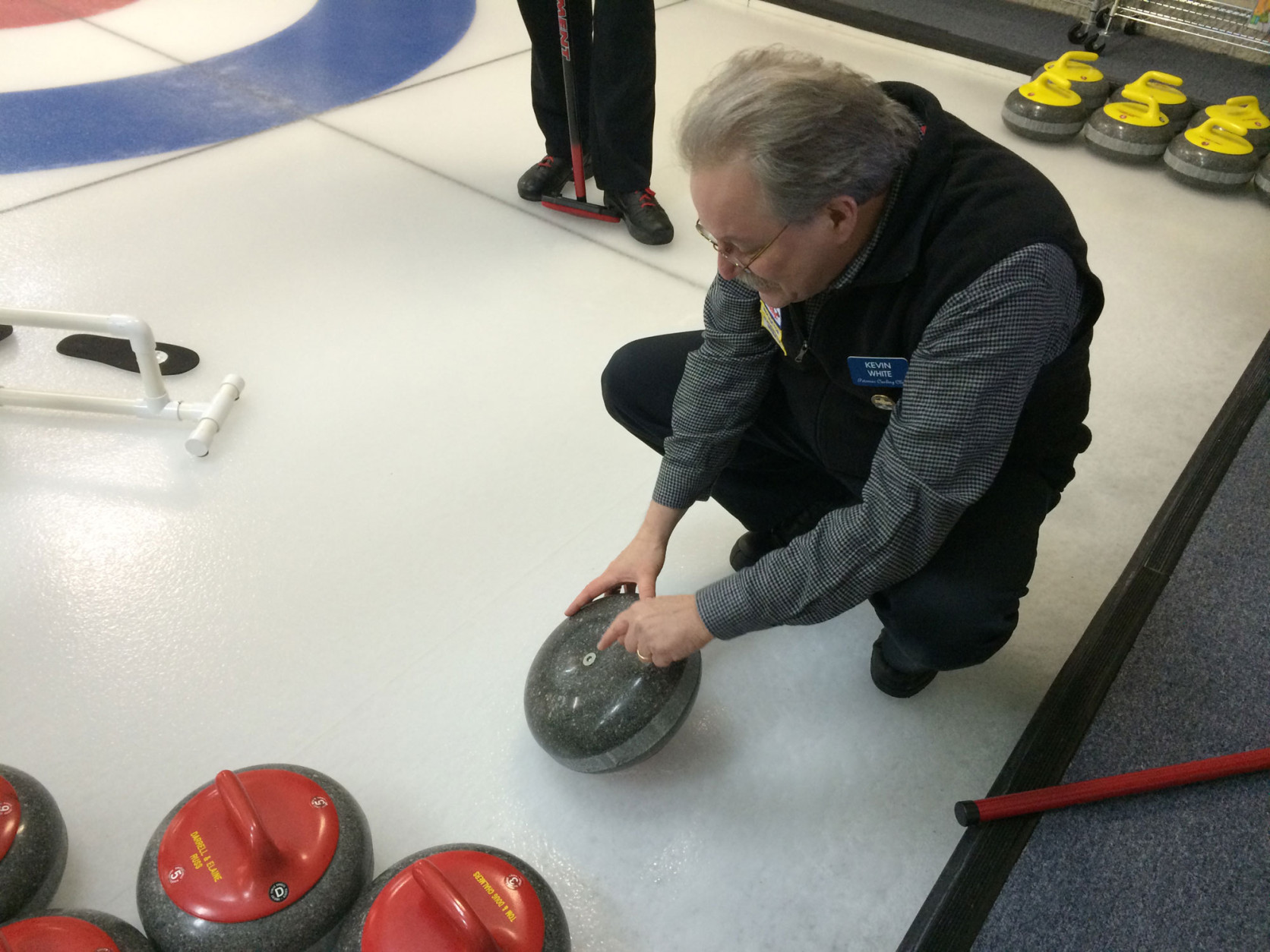
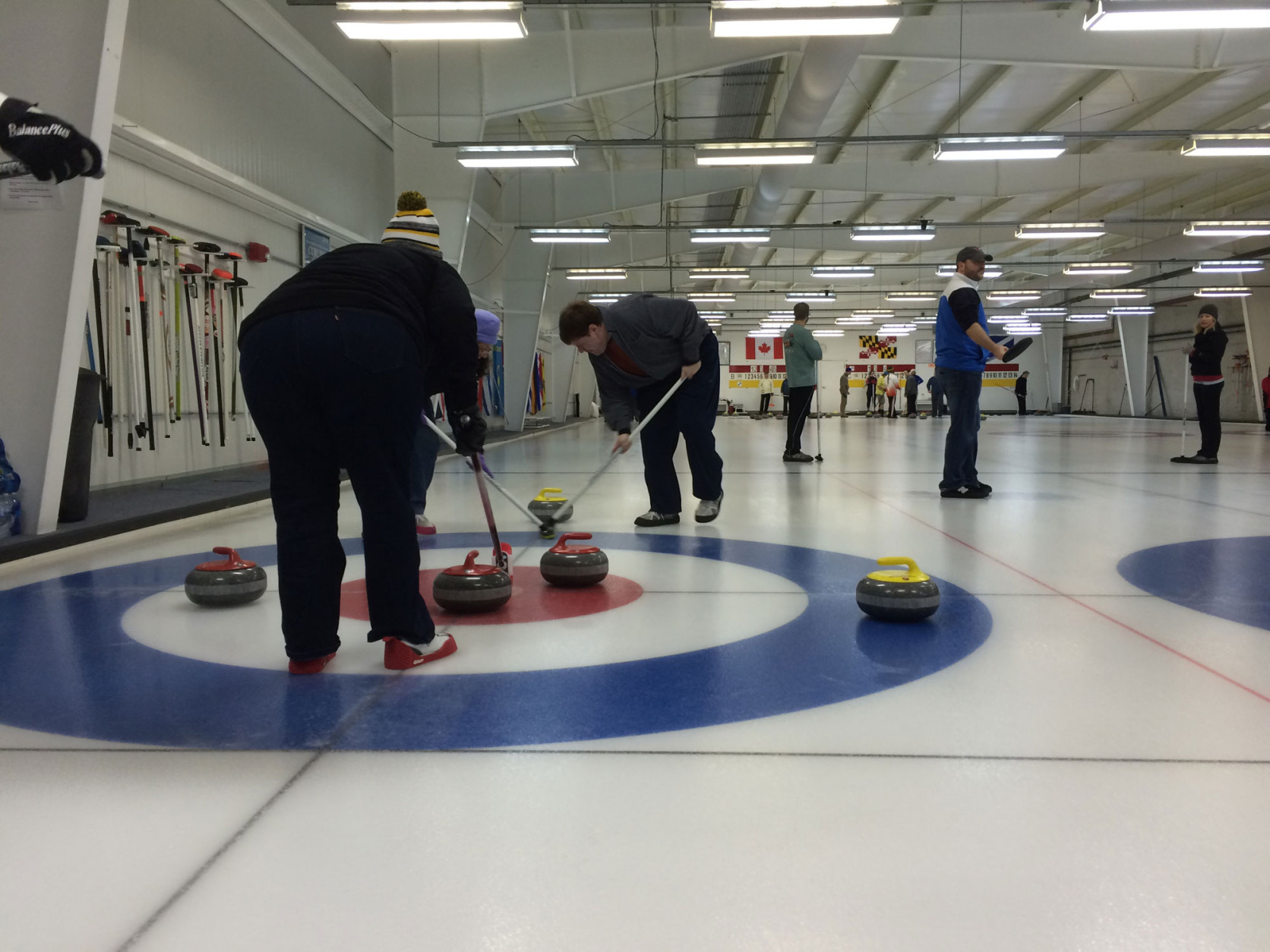
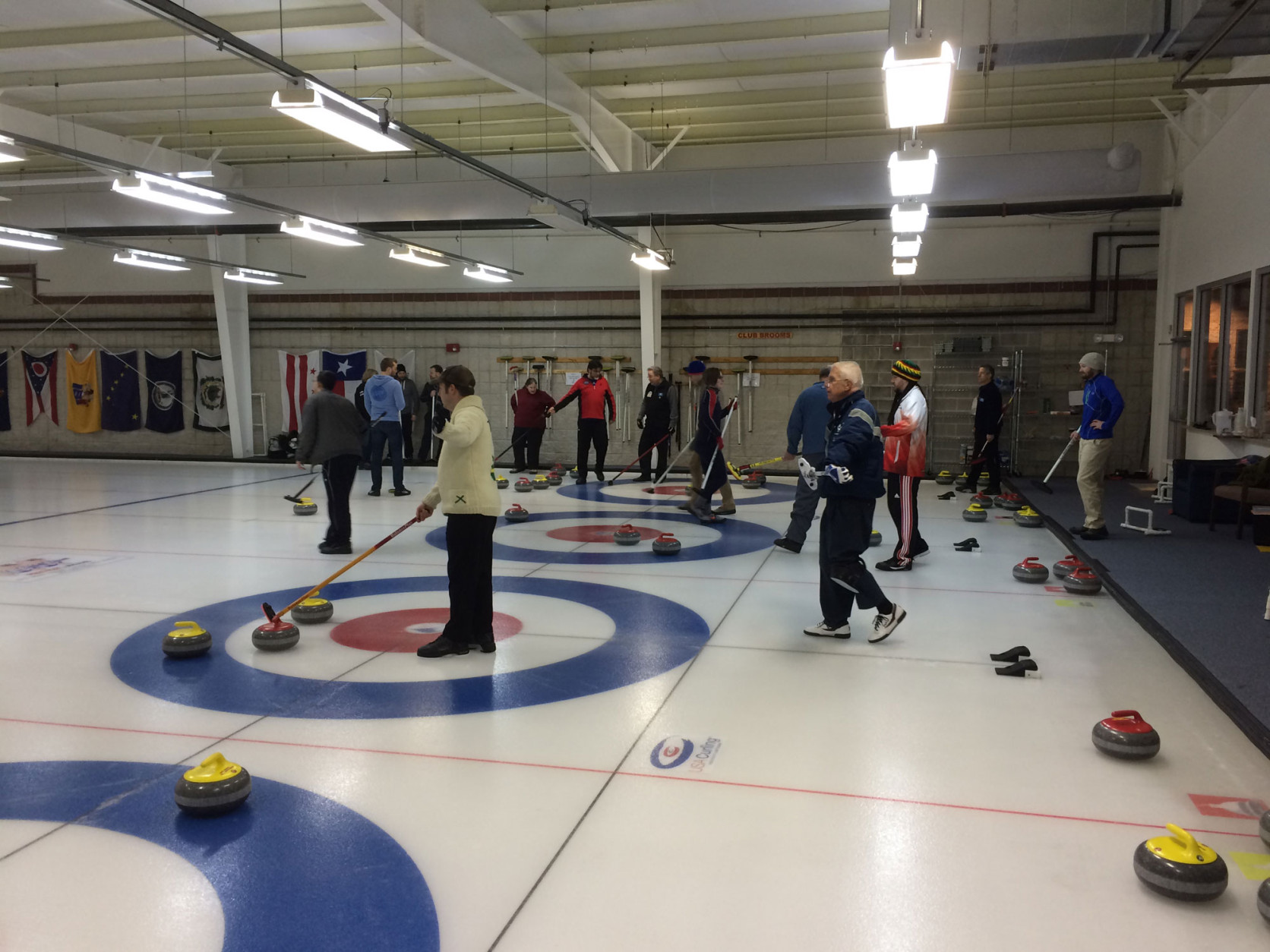
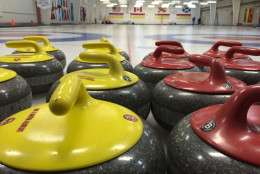
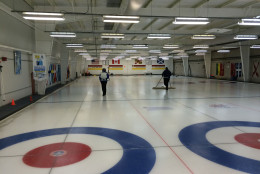
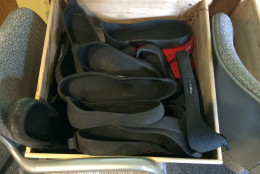
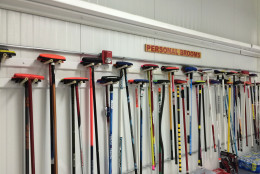
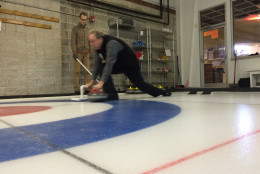
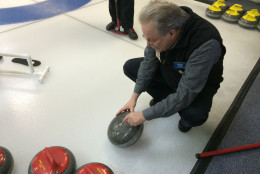
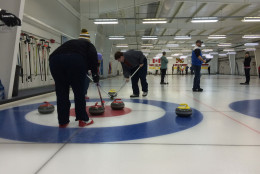
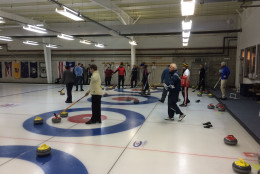
LAUREL, Md. — Every four years, the world gathers to watch the Olympic Winter Games. And while sports such as figure skating and downhill skiing thrill audiences with displays of athleticism and risk-taking, one of the most popular sports is one played by groups of regular people pushing stones down sheets of ice. The sport is curling, one you can try for yourself right here in the D.C. area.
Every Saturday morning from October through mid-April, the small, unassuming building on the side of the National Capital Curling Center in Laurel hosts a Saturday Breakfast Extranvaganza. Those interested in learning about and trying the game can pay $20 for an hour’s instruction from Potomac Curling Club members, breakfast and a full, eight-end game, which lasts about two hours.
“You get to play with members, so this is almost exactly what a league night would be,” says Joe Rockenbach, vice president of the Potomac Curling Club, about the experience. “This is probably the best way to get in.”
It’s how Rockenbach himself found the game nine years ago, during the 2006 Olympics. He had a friend working for the Baltimore Sun’s sports section who told him about it and decided to see what it was like for himself.
“I went to a couple of these Saturday morning things,” he recalls. “Next thing I know, I’m buying my own broom and shoes, and signing up for leagues, and all that other stuff.”
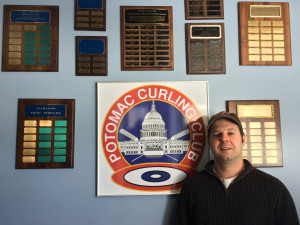
Rockenbach, who works for the Federal Aviation Administration, is part of the all-volunteer staff that keeps the club running. Originally founded in 1961 in Cabin John by a group of 11 members of the Canadian Embassy, the Club moved into its current facility in 2002. There are currently 316 members — including 80 new members this year alone, bringing the Club close to capacity — who pay annual dues for access to unlimited curling and leagues.
A full-year adult membership runs $490 and also allows you to use club brooms and other equipment for free, including the curling stones themselves. That’s important, because they aren’t cheap.
“The last time I looked, it cost $11,000 for a set,” says Rockenbach.
And that’s just the stones. Factor in the handles and the shipping all the way from Scotland, the only place in the world they are made, and sets run somewhere north of $16,000.
One member in attendance last Saturday was Andrew Gross, a relative newcomer to the sport who attended his first open house last Dec. 21. A Philadelphia native like Rockenbach, he now lives in Howard County, not far from the club.
“These guys see everything so clearly,” he says of the more experienced players. “They’re looking two or three moves ahead, like in chess. For me, it’s more like a dimly lit closet.”
But the social aspect is just as big a component of the experience as the game itself. Competitors wish one another “good curling” before they start and help each other line up shots during the game. And when it’s all said and done, the winners buy a round for the losers.
“The most important part is stacking the brooms,” Gross says. “That’s when we all go in afterward and have a beer.”
That’s not to say there isn’t serious competition rolling through. Kendall Behm, a member of the 2015 U.S. National Championship Team, moved to Bethesda last year and trains at PCC. It’s also home to a pair of Israeli National Team players who live in the D.C. area. But most members are like Gross — there for the social aspect and the chance to get better each week.
Abigail Potter and Jonathan Abrams, two of the newcomers on Saturday, commuted from Arlington, about a 35-minute drive early on a weekend morning. While Potter says she wishes it was slightly closer to home, as a former figure skater she was happy to be back on the ice, and enjoyed the community aspect of the game.
“It definitely has a Midwestern feel here, in the friendly sense,” the Ohio native says.
Just as she does, one of the members drops a plate of fresh-baked cookies on the table to share. Abrams, a golfer, likens the two sports.
“It’s addictive like golf,” he says. “Ninety percent of your shots are crap, but one in ten is really good, which brings you back.”
If you want to sign up for a Saturday Morning Extravaganza, you can do so in the next few weeks before the season ends in mid-April. Sign-ups open 10 days before the date and fill up very, very quickly, so be sure to register online right when they open at midnight Wednesday. Slots have filled up in as quickly as six minutes in the past.
For more information about the Potomac Curling Club, check them out online at www.curldc.org or call 301-361-1116.


